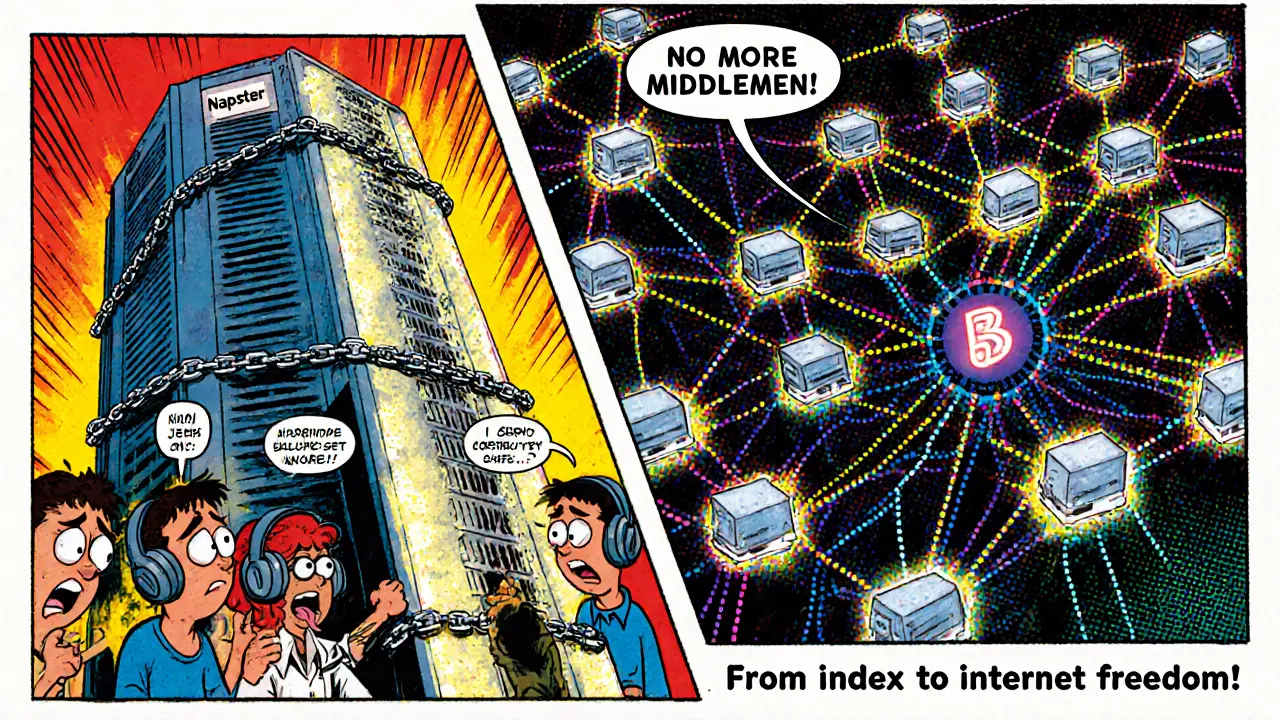How P2P Technology Evolved Within Blockchain Systems
Explore how peer-to-peer technology evolved from early file-sharing to modern blockchain networks, covering consensus, scaling solutions, and future trends in a clear, concise guide.
Read MoreWhen working with decentralized network, a distributed system where control and data are spread across many nodes instead of a single authority. Also known as distributed network, it enables resilience, censorship‑resistance, and peer‑to‑peer interactions. In plain terms, you can think of it as a group of computers that all share the same job, so no single point can shut the whole thing down. This core idea shows up everywhere from crypto wallets to global file‑sharing platforms.
At the heart of most modern decentralized networks sits blockchain, a ledger that records transactions across multiple computers in a way that’s hard to alter. Blockchains give the network a trusted history without needing a bank or a government. Because each node validates and stores a copy of the ledger, the system can keep running even if dozens of nodes go offline. This property fuels everything from Bitcoin’s money‑like behavior to supply‑chain tracking apps.
One powerful off‑shoot of blockchain tech is decentralized finance, a suite of financial services—lending, borrowing, trading—built on public blockchains instead of traditional banks. DeFi leverages the network’s openness to let anyone with an internet connection earn interest, swap assets, or provide liquidity, all without a middleman. The result is lower fees, global access, and new risk dynamics that you’ll see in many of the posts below.
Not all blockchains are created equal. Modular blockchain, an architecture that separates data availability, consensus, and execution into interchangeable layers is reshaping how developers build scalable apps. By letting rollup projects plug into a dedicated data‑availability layer, modular chains improve throughput while keeping security tight. This design is highlighted in recent guides on Celestia and its Ginger upgrade, showing how the concept powers next‑gen Web3 services.
Beyond finance, decentralized networks empower self‑sovereign identity, a model where individuals own and control their personal data without relying on a central provider. With SSI, you can prove who you are, sign transactions, or access services while keeping your credentials in a private wallet. Projects exploring SSI illustrate how the network’s trust‑less nature can extend to identity, not just money.
The posts you’ll find below dive deep into each of these building blocks. From crypto ETFs that bridge traditional markets to DePIN projects reshaping physical infrastructure, the articles illustrate practical ways the decentralized network ecosystem is evolving today. Whether you’re a beginner curious about blockchain basics or a seasoned trader looking for the latest airdrop strategies, this roundup gives you the context and actionable insights you need to navigate the space.

Explore how peer-to-peer technology evolved from early file-sharing to modern blockchain networks, covering consensus, scaling solutions, and future trends in a clear, concise guide.
Read More